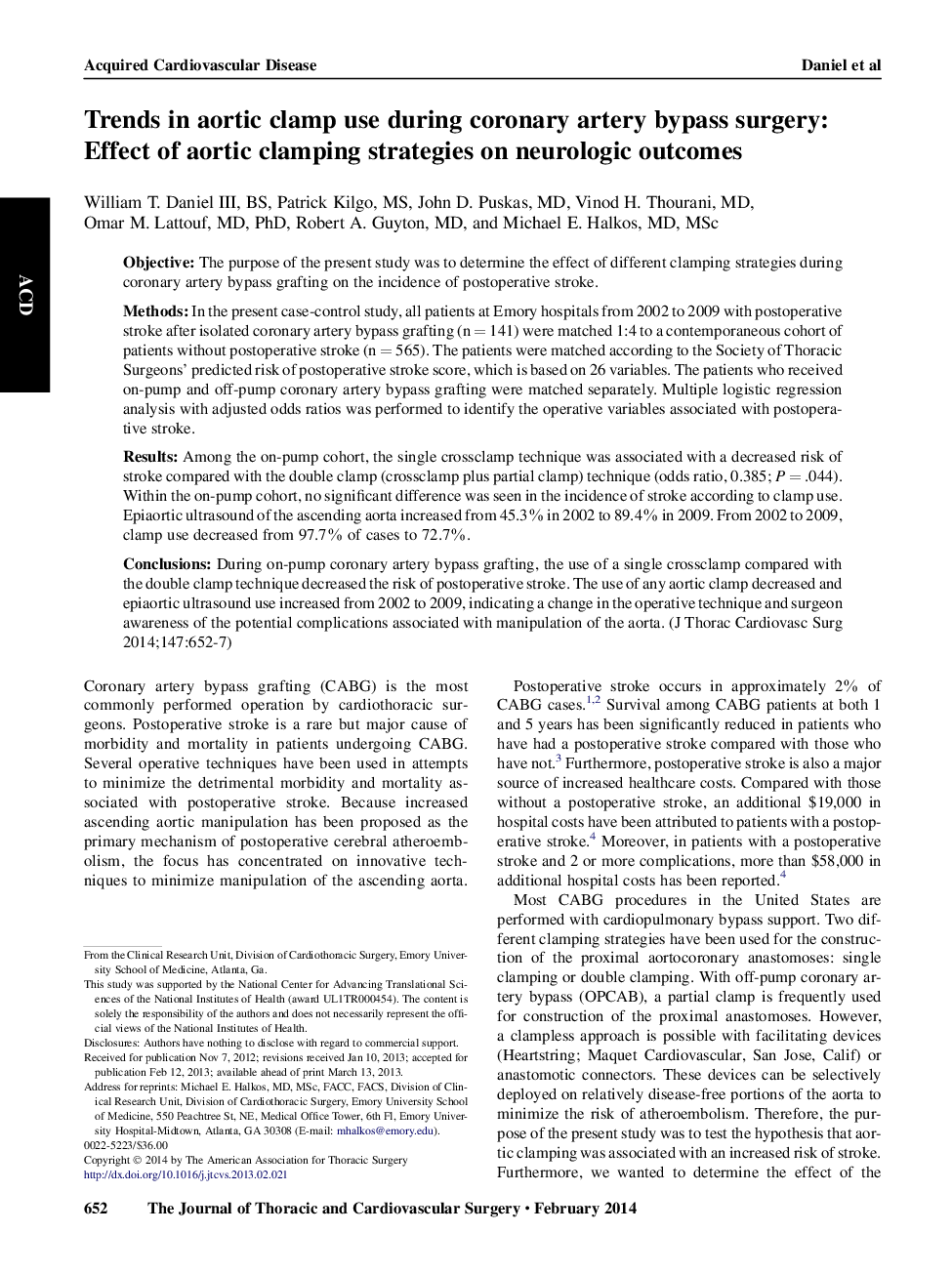| Article ID | Journal | Published Year | Pages | File Type |
|---|---|---|---|---|
| 2980214 | The Journal of Thoracic and Cardiovascular Surgery | 2014 | 6 Pages |
ObjectiveThe purpose of the present study was to determine the effect of different clamping strategies during coronary artery bypass grafting on the incidence of postoperative stroke.MethodsIn the present case-control study, all patients at Emory hospitals from 2002 to 2009 with postoperative stroke after isolated coronary artery bypass grafting (n = 141) were matched 1:4 to a contemporaneous cohort of patients without postoperative stroke (n = 565). The patients were matched according to the Society of Thoracic Surgeons' predicted risk of postoperative stroke score, which is based on 26 variables. The patients who received on-pump and off-pump coronary artery bypass grafting were matched separately. Multiple logistic regression analysis with adjusted odds ratios was performed to identify the operative variables associated with postoperative stroke.ResultsAmong the on-pump cohort, the single crossclamp technique was associated with a decreased risk of stroke compared with the double clamp (crossclamp plus partial clamp) technique (odds ratio, 0.385; P = .044). Within the on-pump cohort, no significant difference was seen in the incidence of stroke according to clamp use. Epiaortic ultrasound of the ascending aorta increased from 45.3% in 2002 to 89.4% in 2009. From 2002 to 2009, clamp use decreased from 97.7% of cases to 72.7%.ConclusionsDuring on-pump coronary artery bypass grafting, the use of a single crossclamp compared with the double clamp technique decreased the risk of postoperative stroke. The use of any aortic clamp decreased and epiaortic ultrasound use increased from 2002 to 2009, indicating a change in the operative technique and surgeon awareness of the potential complications associated with manipulation of the aorta.
